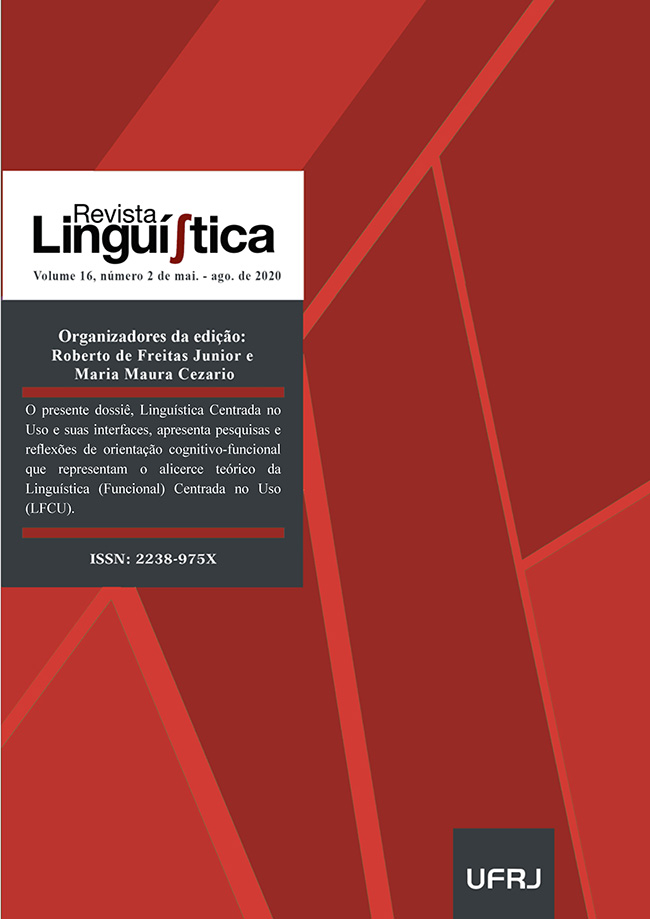Intensifying construction with color lexemes in Brazilian Portuguese
DOI:
https://doi.org/10.31513/linguistica.2020.v16n2a33904Keywords:
Color. Intensifying construction. Allostruction. Construction Grammar.Abstract
This paper exposes the results of the research on the formal-functional configuration of the Xcolor of NS subschema of the Xcolor of Y intensifier construction (as in purple/green of anger or red of shame) in Brazilian Portuguese. We believe that this construction is caused by the fact that our body, more specifically, our face undergoes color changes due to some emotion or sensation, such as when we become pale (from fright), red (from shame, passion) etc. This change in facial coloring is something so recurrent that, by association to the intensity attribute of color, it can motivate not only constructions such as the one studied in this research, but many others, leading us to defend that the emotion revealed through colors (usually on the face) is a factor that contributes to the symbolic elaboration present in the relation of color lexemes to the (sub)schemes exposed here. Thus, from the perspective of Functional-Cognitive Linguistics, which seeks to analyze the language based on sociocultural and pragmatic aspects, communicative situations, internalized knowledge and cognitive operations, and the Grammar of Constructions, for which the language is a network of nodes/form-function/meaning pairings, we analyze how these constructions were triggered and how they are systematically and variably configured, based on Traugott and Trousdale (2013), Machado Vieira (2016) and Wiedemer and Machado Vieira (2018). The data analyzed are from the Corpus do Português, and our method is frequency analysis. Our initial results show that this construction intensifies, above all, negative aspects; the alternation of colors allows their classification as allostructions; and this construction is part of the construction network of Brazilian Portuguese intensifiers.
Downloads
Published
Issue
Section
License
Authors who publish in the Revista Linguí∫tica agree with the following terms:
The authors maintain their rights, ceding to the journal the right to first publication of the article, simultaneously submitted to a Creative Commons license permitting the sharing with third-parties of published content as long as it mentions the author and its first publication in the Revista Linguí∫tica.
Authors may enter into additional agreements for the non-exclusive distribution of their published work (for example, posting in online institutional or non-profit repositories, or book chapters) so long as they acknowledge its initial publication in the Revista Linguí∫tica.

The journal Revista Linguí∫tica is published by the Post-Graduate program in Linguistics of UFRJ and employs a Creative Commons - Attribution-NonCommercial 4.0 International (CC-BY-NC).









